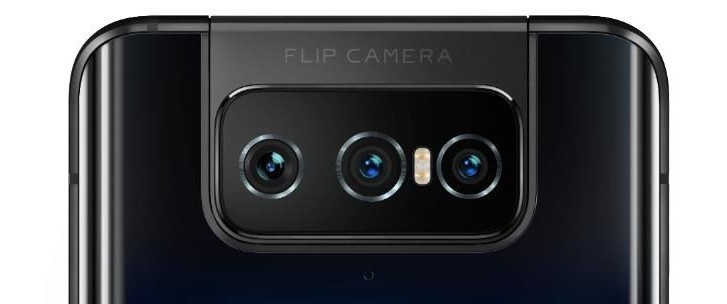Asus’ new all-rounder, Zenfone 7 and 7 Pro has arrived with a major focus on camera and a plethora of exciting stuff. Although, it’s not a gaming phone the ‘Pro’ model comes with the Snapdragon 865+ chipset, just like the ROG Phone 3.
Last year’s flip mechanism from Asus was something to behold and amusing. This year the company has improved it — the Zenfone 7 and 7 Pro now gets a telephoto camera with an improved flip-up mechanism. While the end result is the same, it now has a smaller motor with more than double the torque.
The durability also gets a notch above with it being rated for 100 flips a day for 5 years straight. Likewise, once open, the flip-up mechanism can hold 35 kg of weight pushing it forward — this should be quite hard to break unless you use a real pressure.
About that telephoto cam, it has an 80mm lens offering 3x optical zoom over the main camera. The Asus Zenfone 7 Pro gets an added benefit of optical image stabilization, so as the main camera. However, on the ‘non-Pro’ model, neither sensor gets OIS.
The primary camera now has a 64MP Sony IMX686 sensor with 2×1 OCL autofocus. It can shoot 8K videos at 30 fps and capture 4K slow motion at 120 fps. There’s also HDR video mode with improved night mode algorithms complementing it.
The 12MP ultrawide camera, on the other hand, has the tried and tested Sony IMX 363 sensor. This not only adds autofocus at its disposal (which is not common in ultra wides) but also offers Dual Pixel AF. This one is able to shoot 4K videos, and on top of that, it also acts as a macro shooter but with focus at just 4 cm distance.
With the camera as powerful as this, the Zenfone 7 and 7 Pro will most probably offer amazing selfies thanks to the large 1/1.72″ and a dual-LED flash. It’s 2020 and there are still flagships that don’t have autofocus on their selfie cameras, let alone the option to shoot 8K/30 fps and 4K/120 fps videos from front cam. Also, there’s an ultrawide sensor that can be used for selfies as well.
Talk about flagship features, the Zenfone 7 duo have an improved display here. It uses an AMOLED panel from Samsung that measures 6.67-inch in size with Gorilla Glass 6 on top. The resolution maxes out to 1080p+ with a peak brightness of 1,000 nits, plus there’s DC dimming for flicker-free low-brightness use, Always ON mode, 110% DCI-P3 color gamut and pretty accurate color calibration out of the box.
The screen supports the 90Hz refresh rate and 200Hz touch sampling rate. Combine this with the Snapdragon 865+ processor on the ‘Pro’ model and this will make a good gaming phone if you want. The ‘non-Pro’ model has the non-plus Snapdragon 865 chipset, which is no slouch either.
Nonetheless, both version has up to 8GB LPDDR5 RAM. The storage sits at 128GB for the normal model and 256GB for the Pro. Both phones have dedicated dual-SIM card slot and microSD card slot.
Finally, the 5,000mAh battery on both phones can be charged through a 30W fast charger. This, in turn, will give you a 0-60% charge in just 34 minutes. It is a major improvement over last year’s 18W on Zenfone 6.
The phone borrows one feature from its ROG sibling. You can set the maximum charge limit to 80% or 90% and set a charging schedule so it charges slowly overnight, reaching the maximum number in the morning.
As for the pricing, the Asus Zenfone 7 starts at NT$21,990 in Taiwan for the 8GB/128GB model, which is around Rs. 89,000 in Nepal. For the Pro model with 8GB/256GB trim, it costs NT$27,990 (Rs. 1,13,000 in Nepal). However, no global pricing has been confirmed yet.
Asus Zenfone 7 and 7 Pro Price in Nepal (Expected)
| Model/Variant | Price in Nepal (Expected) |
| Asus Zenfone 7 (8GB/128GB) | NPR 94,999 |
| Asus Zenfone 7 Pro (8GB/256GB) | NPR 1,16,999 |












